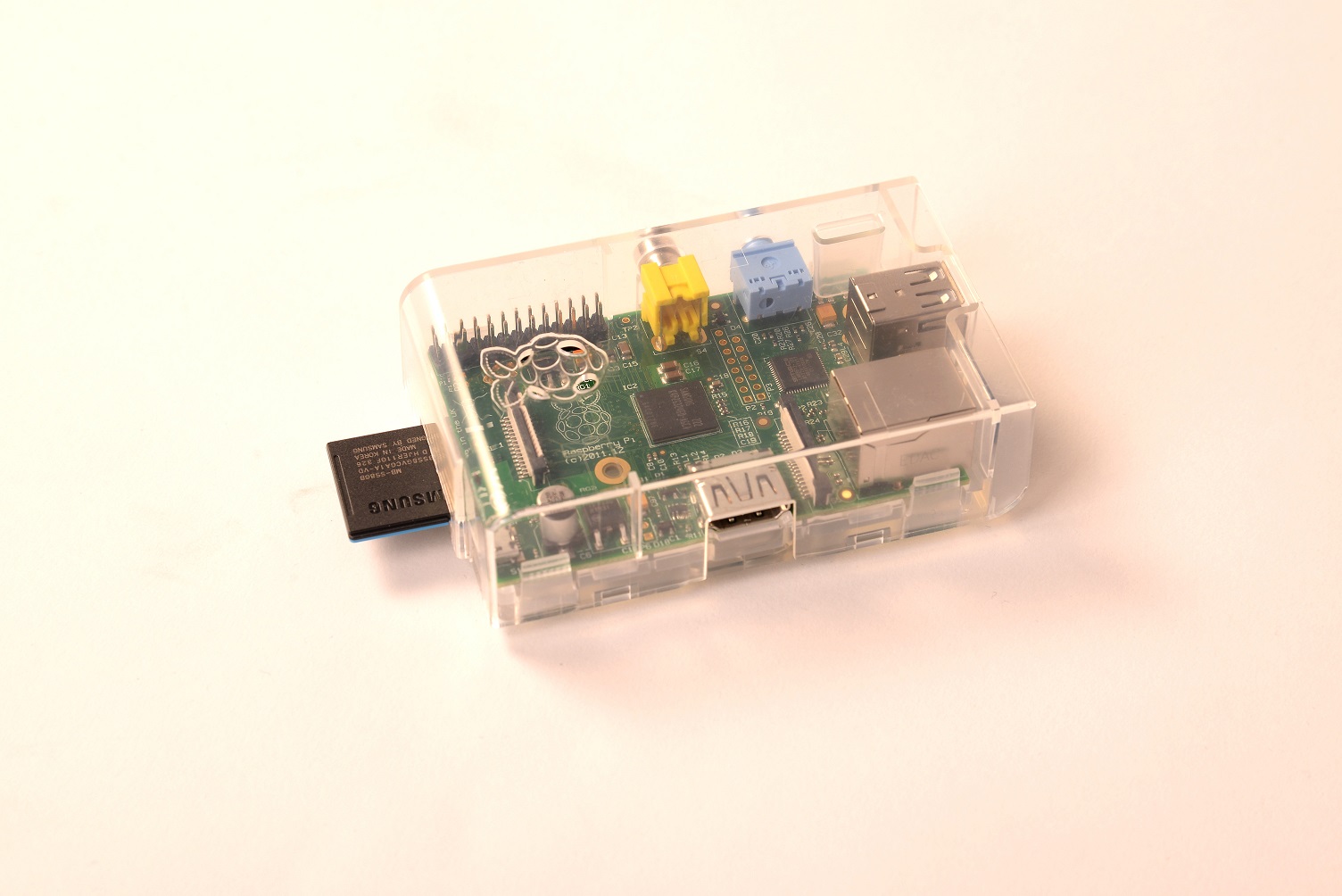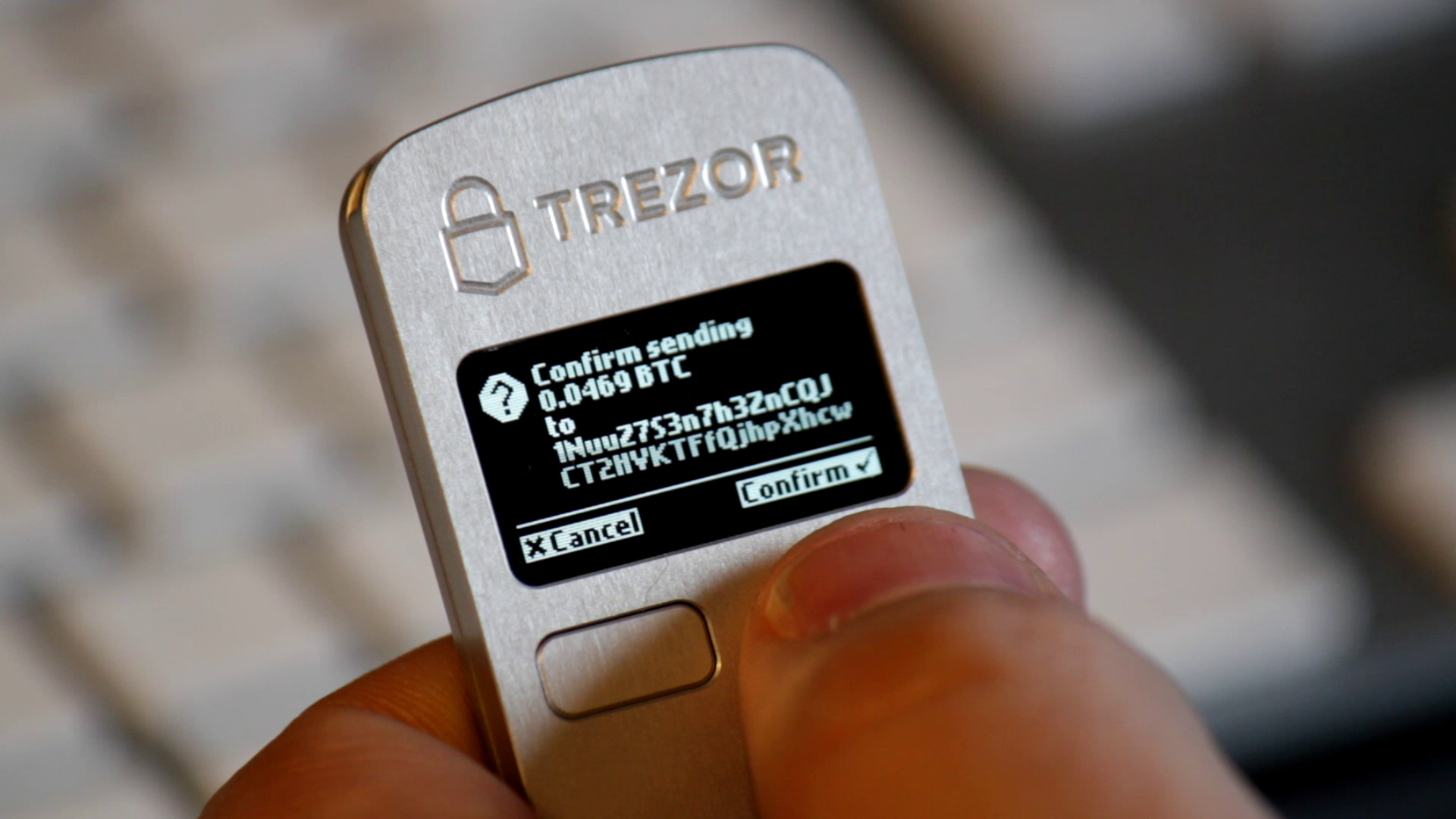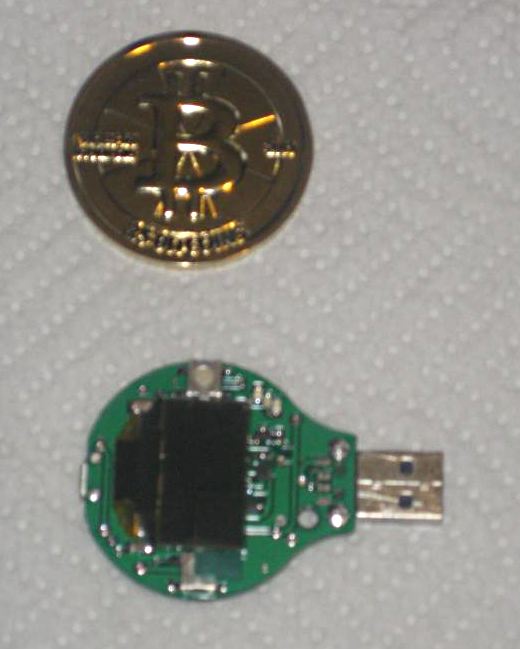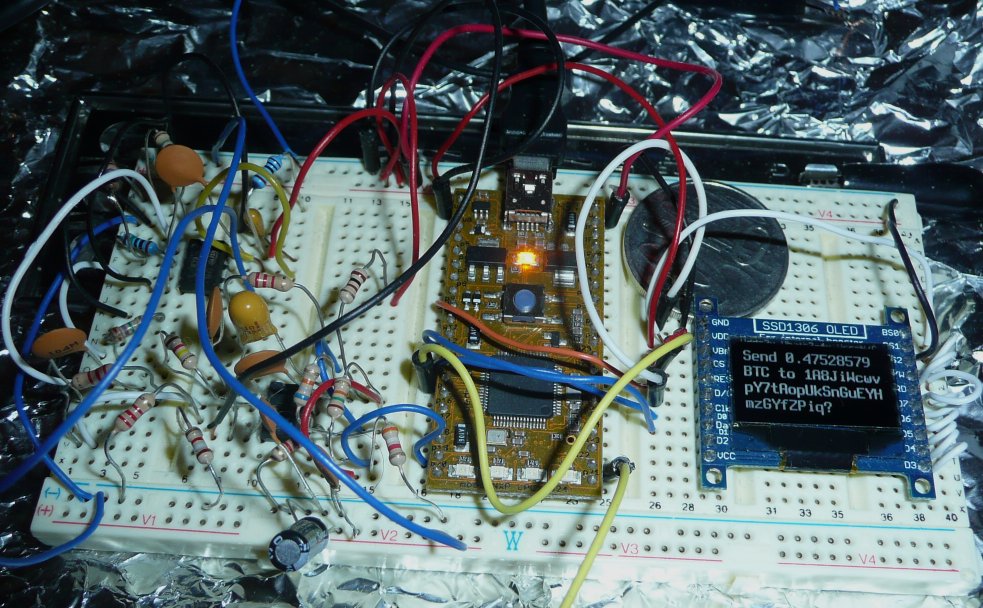Hardware wallet: Difference between revisions
→Piper - Standalone bitcoin paper wallet printer: This isn't a hardware wallet |
→Purchasable hardware wallets: Alphabetical order |
||
| Line 12: | Line 12: | ||
== Purchasable hardware wallets == | == Purchasable hardware wallets == | ||
=== | === BTChip HW.1 - USB Smartcard Hardware Wallet === | ||
[ | [https://www.hardwarewallet.com HW.1 Home Page] | ||
[[File:Btchip_dongle.jpg|220px|thumb|left|HW.1 inserted in a laptop]] | |||
HW.1 is an implementation of a deterministic (BIP 32) Hardware Wallet on a USB smartcard. | |||
It is typically used as a blind secure device for multi signature transactions - holding a set of derived private keys and signing transactions without requiring user confirmation. | |||
Power users can rely on it to confirm all transactions with a second factor scheme turning the dongle into a keyboard typing what the user is supposed to have signed, as a protection against malware. | |||
It is also possible to customize HW.1 for more specfic needs, such as creating a prepaid card without revealing the deterministic seed before it is received by the user, or securing bitcoin transactions on a server. | |||
[ | [https://buy.hardwarewallet.com E-shop] | [https://btchip.github.io/btchip-doc/bitcoin-technical.html Technical Documentation] | ||
<br clear="all"> | <br clear="all"> | ||
=== | === Ledger Wallet - USB Smartcard Hardware Wallet === | ||
[ | [[File:ledger_wallet_dongle.png|300px|thumb|left|Ledger Wallet USB]] | ||
Ledger Wallet protects your Bitcoin data within a smartcard. Its micro-processor certified against all types of attacks (both physical and logical), and has been used in the banking industry for decades (think credit card chips). | |||
The Ledger Wallet connects to your computer through the USB port and will do all the Bitcoin cryptographic heavy lifting such as signing transactions inside its secure environment. You can therefore use your Bitcoin account with maximum trust, even on an insecure or compromised computer. | |||
It is compatible with Electrum 2.0 for power users, or with the Ledger Wallet Chrome application which provides an easy onboarding as well as a seamless user experience. | |||
[https://www.ledgerwallet.com Ledger Wallet Home] | [https://github.com/LedgerHQ Source and specifications] | |||
<br clear="all"> | <br clear="all"> | ||
=== | === Pi Wallet - cold storage === | ||
[[File:Piwallet.jpeg|300px|thumb|left|Pi-Wallet]] | |||
[http://www.pi-wallet.com/ Pi-Wallet Shop] | |||
[ | [http://www.pi-wallet.com/pages/what-is-pi-wallet Further informations about Pi-Wallet] | ||
The Pi-Wallet is comparable to an offline Notebook. | |||
However it combines all features of the Armory bitcoin client (e.g. offline transaction signing) with the advantages of a tiny computer. | |||
To sign offline-transaction you will need an (unused) USB stick. | |||
<br clear="all"> | <br clear="all"> | ||
=== | === [[TREZOR]] The Bitcoin Safe === | ||
[ | [http://bitcointrezor.com BitcoinTrezor.com] | ||
[[File: | [[File:Trezor-tx.jpg|300px|thumb|left|Confirming the transaction with TREZOR]] | ||
[[TREZOR]] is a secure bitcoin storage and a transaction signing tool. The private keys are generated by the device and never leave it thus they cannot be accessed by a malware. | |||
It is | It uses a deterministic wallet structure which means it can hold an unlimited number of keys (BIP32/BIP44). A recovery seed is generated when the device is initialized. In case TREZOR gets lost or stolen, all its contents can be recovered using this seed (private keys, bitcoin balance and transaction history) into a new device or another BIP39/BIP44 compatible wallet. | ||
TREZOR also introduced a unique way of PIN entering preventing keyloggers from recording it even when entered on a compromised computer. An encryption passphrase can be set on top of the PIN protection. More passphrases can be used for plausible deniability. | |||
[http://BuyTrezor.com E-shop BuyTrezor.com] | [http://doc.satoshilabs.com/ TREZOR Documentation] | |||
[ | |||
<br clear="all"> | <br clear="all"> | ||
Revision as of 14:46, 1 December 2014
A hardware wallet is a device that stores a part of a user's wallet securely in mostly-offline hardware. They have major advantages over other wallet types:
- the key is often stored in a protected area of a microcontroller, and cannot be transferred out of the device in plaintext
- immune to computer viruses that steal from software wallets
- can be used securely and interactively, as opposed to a paper wallet which must be imported to software at some point
- much of the time, the software is open source, allowing a user to validate the entire operation of the device
This page is an attempt to summarize all the known developments of hardware wallets that can use Bitcoin as part of their operation.
Purchasable hardware wallets
BTChip HW.1 - USB Smartcard Hardware Wallet

HW.1 is an implementation of a deterministic (BIP 32) Hardware Wallet on a USB smartcard.
It is typically used as a blind secure device for multi signature transactions - holding a set of derived private keys and signing transactions without requiring user confirmation.
Power users can rely on it to confirm all transactions with a second factor scheme turning the dongle into a keyboard typing what the user is supposed to have signed, as a protection against malware.
It is also possible to customize HW.1 for more specfic needs, such as creating a prepaid card without revealing the deterministic seed before it is received by the user, or securing bitcoin transactions on a server.
E-shop | Technical Documentation
Ledger Wallet - USB Smartcard Hardware Wallet

Ledger Wallet protects your Bitcoin data within a smartcard. Its micro-processor certified against all types of attacks (both physical and logical), and has been used in the banking industry for decades (think credit card chips).
The Ledger Wallet connects to your computer through the USB port and will do all the Bitcoin cryptographic heavy lifting such as signing transactions inside its secure environment. You can therefore use your Bitcoin account with maximum trust, even on an insecure or compromised computer.
It is compatible with Electrum 2.0 for power users, or with the Ledger Wallet Chrome application which provides an easy onboarding as well as a seamless user experience.
Ledger Wallet Home | Source and specifications
Pi Wallet - cold storage

Further informations about Pi-Wallet
The Pi-Wallet is comparable to an offline Notebook.
However it combines all features of the Armory bitcoin client (e.g. offline transaction signing) with the advantages of a tiny computer.
To sign offline-transaction you will need an (unused) USB stick.
TREZOR The Bitcoin Safe

TREZOR is a secure bitcoin storage and a transaction signing tool. The private keys are generated by the device and never leave it thus they cannot be accessed by a malware.
It uses a deterministic wallet structure which means it can hold an unlimited number of keys (BIP32/BIP44). A recovery seed is generated when the device is initialized. In case TREZOR gets lost or stolen, all its contents can be recovered using this seed (private keys, bitcoin balance and transaction history) into a new device or another BIP39/BIP44 compatible wallet.
TREZOR also introduced a unique way of PIN entering preventing keyloggers from recording it even when entered on a compromised computer. An encryption passphrase can be set on top of the PIN protection. More passphrases can be used for plausible deniability.
E-shop BuyTrezor.com | TREZOR Documentation
Not purchasable hardware wallets
BitcoinCard Megion Technologies-Card based wallet

Incorporates a e-paper display, keypad, and radio (custom ISM band protocol.) Unfortunately it is fairly limited in terms of transaction I/O, requiring a radio gateway or another bitcoincard wherever funds need to be transferred.
BitSafe - allten/someone42's hardware wallet

BitSafe Hardware Wallet Development - BOM Ready - 50 kits being prepared
Signing transactions only, requires USB host software for transactions & USB power. Has a OLED display and Confirm/Cancel buttons. Evolved out of someone42's prototype below, and has significant contributions from someone42 as well.
someone42's original prototype

Hardware Bitcoin wallet - a minimal Bitcoin wallet for embedded devices
Signing transactions only, requires USB host software for transactions & USB power. All work is rolled into the above BitSafe wallet currently.
Other/Defunct but with good discussion:
- natman3400's BitClip Jun 2011 https://bitcointalk.org/index.php?topic=24852.0
- Seems to have gone defunct around Dec 2011. Some good ideas though and seemed to have started on execution.
- jim618 hardware wallet proposal Apr 2012 Dedicated bitcoin devices - dealing with untrusted networks
- Great discussion and good ideas from jim618. Also linked the following video:
- Prof. Clemens Cap's hardware wallet? (video:)Clemens Cap about electronic bitcoin wallet at EuroBit
- Clemens Cap of Uni Rostock explains the Electronic Bitcoin wallet device he's working on. It's based on adafruit microtouch device.
- ripper234's discussion based on Yubikeys Aug 2012 Having a YUBIKEY as one of the parties for m-of-n signatures
- The use of Yubikeys. They only support symmetric crypto, so you'd have to trust the host device.
- kalleguld's hardware wallet proposal Oct 2012 Proposal: Hardware wallet (Win 3 BTC)
- Vaporware: Matthew N Wright's ellet ANN The world's first handheld Bitcoin device, the Ellet! (Vaporware)
Smart Card based wallets
This type of device requires complete trust in the host device, as there is no method for user input. See Smart card wallet
Related Resources
- slush's Hardware wallet wire protocol discussion: Hardware wallet wire protocol
- kjj's Todo List discussion for client protocol requirements: in topic Re: Split private keys
- paybitcoin's original post: Hardware Wallet Roundup
- This thread about editing this very wiki entry.
- Various Hardware Wallets and Reviews: Offline Hardware Wallets